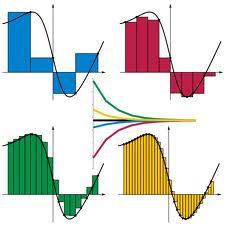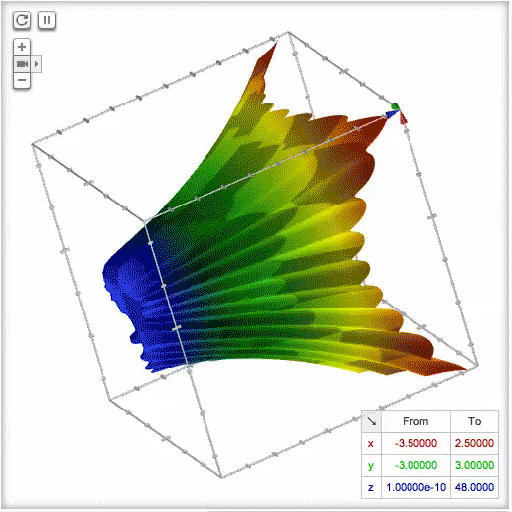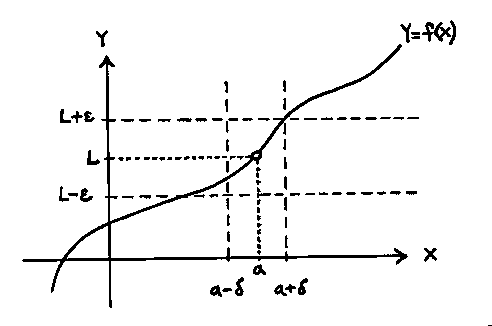|
Advanced Calculus
(15-Math-6001) |
real number field, completeness axiom, limit superior and inferior, subsequences, Bolzano-Weierstrass and Heine-Borel theorems, continuity and differentiability, the Chain Rule, the Intermediate and Mean Value theorems, Taylor series and theorem, Weierstrass M-test, the Riemann integral |
Department of
Mathematical
Sciences |
|
|
|
|
|
This page is a work in progress! (Last revised 19 Sept 2012)
Instructor Prof David A Herron
4514 French Hall West, 556-4075 |
My Office Hours
Mon, Wed 1:20-2:50 and by appt |
E-mail me at David's e-address
My web page is at David's w-address |
Problem Session
Thur during class time (except exam days) |
Below you can find information regarding:
some suggested problems from the textbook, links to a number of interesting things, and the homework assignments.
Textbooks
There are scores of Advanced Calculus/Introduction to Analysis texts available in the Geo-Math-Physics Library. Below I list just a few of the many many such texts. I will use Wade's book to generate my lectures, and most if not all HW problems will come from Wade. Sometimes it can be a good idea to look at more than one book, because often some author will say things in just the 'right' way. Also, do not overlook the web as a resource.
The last book, by Trench, is free and available here. The book by Rudin is somewhat more sophisticated than the rest, but it's a great reference.
| W |
Wade |
An Introduction to Analysis |
| A |
Apostol |
Mathematical Analysis |
| DD |
Dence & Dence |
Advanced Calculus: A Transition to Analysis |
| F |
Folland |
Advanced Calculus |
| Ro |
Rosenlicht |
Introduction to Analysis |
| Ru |
Rudin |
Principles of Mathematical Analysis |
| T |
Trench |
Introduction to Real Analysis |
General Syllabus Chapters: 1-8 and 10 in Wade's book.
Course Goals
First and foremost, this is a course geared towards teaching you to think, act, and problem solve like a mathematician. Of particular importance, to me, is your acquiring the ability to communicate mathematical ideas effectively. This means learning how to read, and especially to write, mathematical proofs. In addition, you should come to understand that different environments lend to different communication requirements.
We shall study elementary analysis. A subgoal, at least for some of you, is preparation for the graduate program Qualifying Exam; I will have (much) more to say about this in the spring (at which time I may run a practice problem session). Here is a list of the Qualifying Exam topics and some practice problems.
Grades
Your final course grade will be determined from your performance on two in class exams, a comprehensive final exam, your homework scores, your written assignments, and your classroom and problem session participation.
Here is a precise breakdown:
- 30% --- final exam
- 30% --- 2 in-class hour exams
- 30% --- homework and assignments
- 10% --- class and problem session participation
The Final Exam is scheduled for Monday 10 December at 1:30-3:30. The in-class hour exams are (tentatively) scheduled for Friday 5 October and Friday 16 November.
You should be sure to work all of the exercises as well as the problems in the text. I may use some of these on the exams and quizzes.
I will ask you write up and hand in solutions to certain exercises from the textbook (aka, Homework); these will be graded and returned to you. See below for due dates. I'll say more about this in class.
Here are some links to some interesting *things* such as videos, power point files, etc. I will add to this list as the year progresses.
Writing Mathematics
Class Stuff
Unless I explicitly indicate otherwise, you should read everything in Wade's book and work all of the exercises that you find as you read. Any of these exercises, as well as all of the "fill in the details" that I mention during lectures, are fair game as "easy" exam questions.
Below is the assigned homework with due dates. The "Problems To Hand In" are to be written up and handed in before class on the indicated dates. The "For Problem Session" problems will be discussed in that week's problem session. After the due date, you can find outlines for solutions (at least for some of the problems) by clicking the appropriate problem number.
Please be sure to check out my guidelines for writing up your HW solutions.
| Due Dates |
Problems To Hand In |
For Problem Session |
| 27,29,31 Aug |
First Day |
|
1.2.6 |
1.2: 0, 1, 4de, 5d, 6, 7c, 8a, 10
1.3: 2, 7, 10 |
| 5,7 Sep |
Labor Day |
1.3.10 |
1.4.5 |
1.4: 1c, 3d, 6;
1.5: 1e, 3f, 6; 1.6: 3 |
| 10,12,14 Sep |
1.5.1(ae,be) |
1.6.3 |
2.1.5 |
1.5: 7; Inverse Exs;
2.1: 5, 7, 8; 2.2: 1d, 4a |
| 17,19,21 Sep |
2.2.8(a)^1 |
2.3.7 |
2.4.7a |
Inverse Exs;
2.3.3; 2.4: 4, 6 |
| 24,26,28 Sep |
2.4.6, 2.4.7b^2 |
3.1.6 |
3.1.9 |
Inverse Exs;
3.1: 2, 3be 3.2: 4, 5, 8 |
| 1,3,5 Oct |
3.2.3, 3.2.7 |
RX1 |
First Exam |
Review for Exam 1 |
| 8,10,12 Oct |
3.3.7 |
X1 MU |
3.3.8 |
3.3: 2, 4, 5; 3.4: TBA |
| 15,17,19 Oct |
|
|
|
|
| 22,24,26 Oct |
|
|
|
|
| 29,31 Oct; 1 Nov |
|
|
|
|
| 5,7,9 Nov |
|
|
|
|
| 14, 16 Nov |
Vets Day |
|
Second Exam |
|
| 19,21 Nov |
|
|
Thanksgiving Holiday |
| 26,28,30 Nov |
|
|
|
|
| 3,5,7 Dec |
|
|
|
Final Review |
| Mon 10 Dec |
Final Exam |
1:30-3:30 |
|
|
- Use problem 1.4.1(c) to show that the sequence (x_n) does indeed converge. Be sure to indicate when the limit is 0 or 1 or in (0,1).
- 2.4.7b is just what I called the BWT. Instead, please prove the corollary that I called the "BWT for Sequences".
- follow
Below I list suggested problems for each indicated chapter in Wade's book (An Introduction to Analysis). Don't forget to look at (i.e., work through) the many exercises placed throughout the book.
| 1. The Real Number System |
| 1.2 |
0, 1, 4de, 5d, 6, 7c, 8a, 10 |
| 1.3 |
0, 1, 2, 6, 7, 9, 10 |
| 1.4 |
0, 1b, 3c, 4c, 6 |
| 1.5 |
0bcd, 1(ab)dez, 3, 5, 6, 7 |
| 1.6 |
0, 3, 6 |
| 2. Sequences in R |
| 2.1 |
0, 1d, 3c, 4b!, 5, 6, 7, 8 |
| 2.2 |
0, 1d, 2d, 3, 4a, 6, 8, 9 |
| 2.3 |
0, 1, 3, 5, 7, 8 |
| 2.4 |
0, 1, 2, 4, 5, 6, 7 |
| 2.5 |
|
| 3. Functions on R |
| 3.1 |
0, 1d, 2, 3be, 6, 9 |
| 3.2 |
0, 1ace, 2ab, 3, 4, 5, 7, 8 |
| 3.3 |
0, 1bc, 2b, 3, 4, 5, 7, 8, 9 |
| 3.4 |
0, 1a, 3, 4, 5, 6, 7, 8, 9 |
| 4. Differentiability on R |
| 4.1 |
0, 1, 2, 3, 4, 6, 7, 8 |
| 4.2 |
0, 4, 7, 8, 9 |
| 4.3 |
0, 2, 3, 5, 6, 7, 8, 9, 10, 11, 12 |
| 5. Integrability on R |
| 6. Infinite Series of Real Numbers |
| 7. Infinite Series of Functions |




